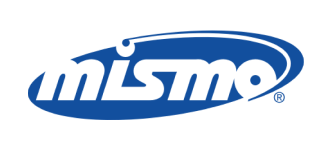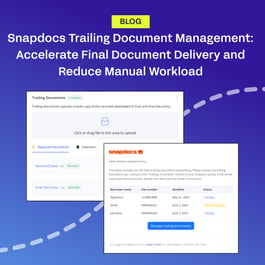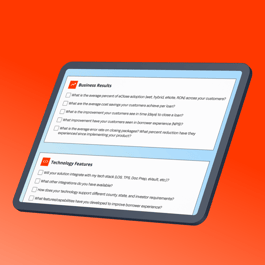This article is part of our educational series on the five key factors that determine how digital your mortgage closings can be, known as e-Eligibility. For more information, download the full eBook.
Lenders are leveraging digital technology to scale their mortgage closing processes and gain a competitive edge with borrowers. However, implementing a more efficient closing process means grappling with e-Eligibility. e-Eligibility, or the factors that impact the degree to which a mortgage can be closed digitally, can be confusing to keep up with and understand.
In this article, we’ll review the requirements factor of e-Eligibility. Requirements refers to whether the investor, warehouse lender, or other counterparties that the lender will deliver loans to will accept electronically signed (eSigned) and/or electronically notarized (eNotarized) closing documents.
Depending on the type of counterparty, this could be a matter of the counterparty’s policies, or it could be a matter of their technical and operational capabilities, or both. When counterparty requirements are miscalculated or misunderstood, the loan closing faces the risk of costly delays.
Here is a detailed framework for what lender should consider when assessing Counterparty Requirements.
Counterparty Requirements at a Glance
Definition of Counterparty Requirements:
- Whether the lender’s counterparties (defined as investor, warehouse lender, servicer, subservicer, or custodian) are enabled by policy or capability (as applicable) to accept eSigned and eNotarized closing documents.
- Investors’ policies may impact any and all of the closing documents’ ability to be eSigned or eNotarized, as applicable.
- Whereas, warehouse lenders’ policies are primarily concerned with whether the promissory note is wet-ink signed or electronically signed (eNote).
- Now’s the time to digitize mortgage closings. Despite the complexity and variability of e-Eligibility factors, mortgage industry stakeholders are rapidly digitizing the closing process. To start mastering e-Eligibility and ensure a smoother closing process, download our eBook, The 5 Rs of e-Eligibility for Mortgage Closings.
Primary Stakeholders:
- Investors, warehouse lenders, servicers, subservicers, and custodians
Objects:
- Loan collateral file, comprised of closing documents and other artifacts associated with the loan, as applicable to the counterparty.
Systems:
- Loan origination systems, closing systems, proprietary collateral delivery and document storage systems, eVaults, MERS® eRegistry, MERS® eDelivery
Mortgage Cycle:
- Post-closing
Decision Power:
- Moderate. While lenders have some control over the counterparties that they transact with (such as subservicers and warehouse lenders), other counterparties may be dictated by the loan type, or the ultimate investor may not be known until post-closing. Also, if a lender does not use a warehouse lender or retain loans in their own portfolio, or services its own loans, aspects of this e-Eligibility factor might not apply.
Boons:
- ++ Investor accepts eNotes
- ++ Investor accepts other eSigned closing documents, including the use of eNotarization (IPEN and/or RON)
- ++ Warehouse lender will fund eNotes
- + Servicer is enabled to accept eNotes
- + Subservicer is enabled to accept eNotes
- + Custodian is enabled to accepts eNotes
Drags:
- Investor does not accept eNotes
- Investor does not accept other eSigned closing documents, including the use of eNotarization (IPEN and/or RON)
- Warehouse lender will not fund eNotes
- Servicer is not enabled to accept eNotes
- Subservicer is not enabled to accept eNotes
- Custodian is not enabled to accepts eNote
Sources of Variability:
- Loan type, document type, borrower type, eNotarization type, property state
Process:
- Generally speaking, a copy of the loan collateral file consisting of closing documents and other artifacts associated with the loan, are distributed or made accessible, as applicable to the counterparty’s role.
- For eNotes, a copy of the eNote is delivered to certain counterparties, through MERS® eDelivery and rightsholder positions on the MERS® eRegistry are transferred to the counterparty, as applicable to the counterparty’s role.
- If the note is a paper promissory note, certain counterparties, such as the warehouse lender or investor, will require that it (or its designated custodian) receive the original wet-ink copy of the promissory note endorsed to it or endorsed in blank.
Considerations:
- For certain types of digital mortgage closings, the investor may require that the servicer also retain a copy of the digital mortgage closing audit trail and transfer this audit trail to future servicers. Additionally, for digital mortgage closings with RON some investors may require that lenders (or the lenders’ assignees) retain access to the audio-video recording associated with a RON for a specified period of time.
Next Steps Towards Closing Mortgages Digitally
Now’s the time to digitize mortgage closings. Despite the complexity and variability of e-Eligibility factors, mortgage industry stakeholders are rapidly digitizing the closing process. To start mastering e-Eligibility and ensure a smoother closing process, download our eBook, The 5 Rs of e-Eligibility for Mortgage Closings.
Discover the other factors of e-Eligibility below:
- Why Lenders are Digitizing Mortgage Closings Today
- Six Obstacles to Addressing e-Eligibility when Digitizing Mortgage Closings
- The Five Rs of e-Eligibility when Digitizing Mortgage Closings
- How to Put e-Eligibility for Digital Mortgage Closings into Practice
- The Spectrum of Digital Mortgage Closing Eligibility: Takeaways from the 2021 Mortgage Innovators Conference




















